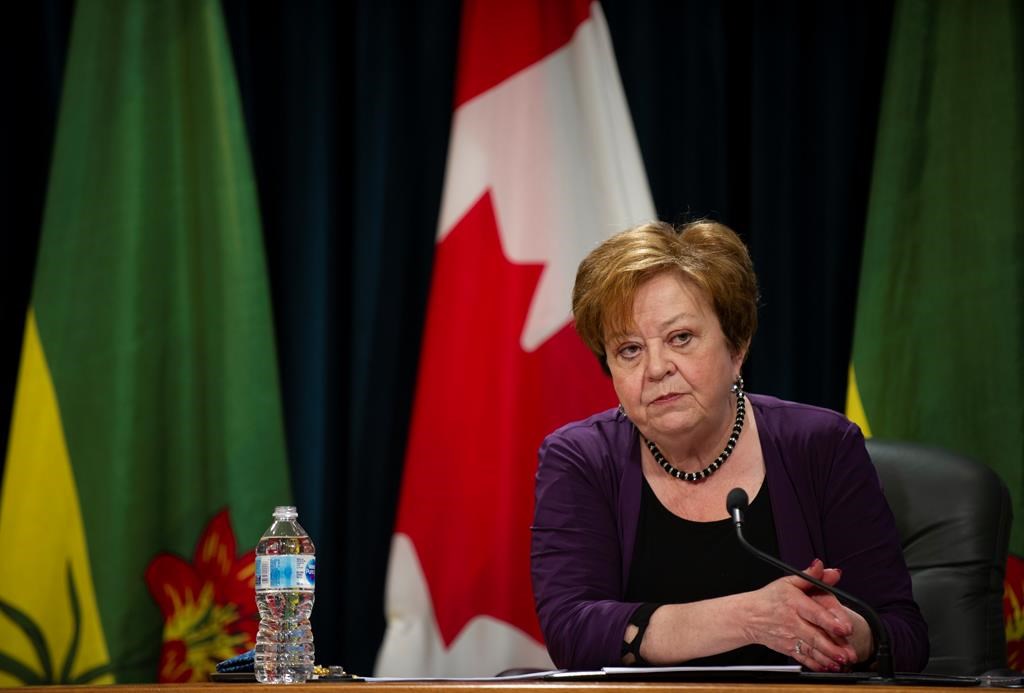An election promise made by the Saskatchewan Party to balance the budget by 2024-25 will not be met.

Finance Minister Donna Harpauer is projecting deficits for the next four years, with a return to balance in 2026-27 as she tabled the 2021-22 budget in the legislature Tuesday.
Harpauer said the COVID-19 pandemic has had a significant impact on the province’s books.
“As a result, this year’s deficit will be larger and it will take longer to return to balance than we had anticipated,” she said.
“But we are going to make the investments needed now to protect Saskatchewan people through the end of the pandemic and to drive a strong economic recovery as we emerge from the pandemic.”
NDP Leader Ryan Meili says the budget breaks a key election promise made by the Saskatchewan Party.
“The government said during the election they would balance the budget by 2024, knowing full well that they would not,” Meili said.
“That lie was confirmed today.”
- What is a halal mortgage? How interest-free home financing works in Canada
- Capital gains changes are ‘really fair,’ Freeland says, as doctors cry foul
- Ontario doctors offer solutions to help address shortage of family physicians
- Canada will take bigger economic hit than U.S. if Trump wins election: report
Harpauer said the 2021-22 budget — with a forecast deficit of $2.6 billion — will make a record investment in health care, education, social services and the protection of people and property.
“This budget will build Saskatchewan by investing in new long-term care facilities, hospitals, schools, highways and vital municipal infrastructure,” she said.
“And as our province and our economy emerges from the pandemic, this budget will grow Saskatchewan through incentives and key investments, while keeping life affordable for families.”
Trent Wotherspoon said the budget fails families in the province and they are now paying the price of those failures.
“There’s no jobs plan in this budget to get struggling families back to work — despite the many opportunities we have to grow and diversify our economy,” said Wotherspoon, the NDP’s finance critic.
“COVID-19 exposed the real crises in education, health care, long-term care, mental health and addictions — but this government won’t make the crucial investments we need in the services families count on.”
GDP is forecast to grow 3.4 per cent in 2021 after a projected 4.2 per cent contraction in 2020. Revenue for the budget year is estimated at $14.5 billion, with expenses projected to be $17.1 billion.
Harpauer is projecting smaller deficits of $1.7 billion in 2022-23, $1.2 billion in 2023-24 and $770 million in 2024-25 before returning to a balanced budget in 2026-27.
Harpauer said expenditures in this year’s budget are $1 billion more compared to last year.
“While Saskatchewan’s economy has fared better than most through the global health crisis, with continuing high levels of employment, the pandemic has still had a significant impact on the province’s economy and finances,” Harpauer said.
“Our government has set a course to meet the fiscal challenge. We will manage carefully — without reckless cuts or large tax increases that would threaten both the pandemic response and a strong recovery.”
Spending
A record $6.54 billion is budgeted to health care, up 5.8 per cent, or $359 million, from last year.
Part of that — $90 million — is tasked for the province’s COVID-19 response, including mass vaccination delivery, purchasing personal protection equipment and supporting contact testing.
Education spending is up $391 million to $3.75 billion, an increase of 11.6 per cent.
Officials said $1.96 billion will go to the province’s 27 school divisions, with another $678.5 million for post-secondary institutions.
The Saskatchewan government said it is also budgeting $3.1 billion in capital spending to stimulate the economy and create jobs.
Part of that — $830 million — will go into upgrading and improving the province’s road system, officials said.
New taxes
Three new taxes have been introduced in the budget, which the Saskatchewan government said are being brought in to improve tax fairness.
The first is a vapour products tax (VPT), which brings in a 20 per cent tax on the retail price of all vapour liquids, products and devices effective Sept. 1. Officials said as of that date, only retailers with a VDT licence are allowed to sell those products.
The second is a heat-not-burn tax on tobacco sticks. The purpose, officials said, is to maintain tax equity between different types of tobacco products. The tax rate will be 20.5 cents per stick, which is effective June 1.
The third new tax is on electric vehicles. Officials said electric vehicles contribute to the wear and tear on the province’s road system, however, they said those vehicles do not contribute to highway maintenance through the fuel tax.
A new annual tax of $150 per vehicle will be collected starting Oct. 1 by SGI when passenger EVs are registered.
The province said it will not apply the tax at this time on either commercial vehicles or interprovincial trucking, but said the government will continue to examine the future potential for expanding the tax to those vehicles.
Officials said options to apply a tax at charging stations is also a future option.
Debt
Harpauer said total public debt will rise $4.2 billion to $27.8 billion by March 31, 2022.
She said borrowing is for operations and new capital investments in hospitals, schools, highways, and municipal and Crown infrastructure.
Officials said the province’s debt will remain one of the lowest in the country.
They said Saskatchewan’s net debt as a percentage of GDP is forecast at 19 per cent as of March 31, 2021, tied with Alberta for the lowest among the provinces.
Net debt as a percentage of GDP is forecast to rise over the next four years to 26.3 per cent by 2025.





Comments